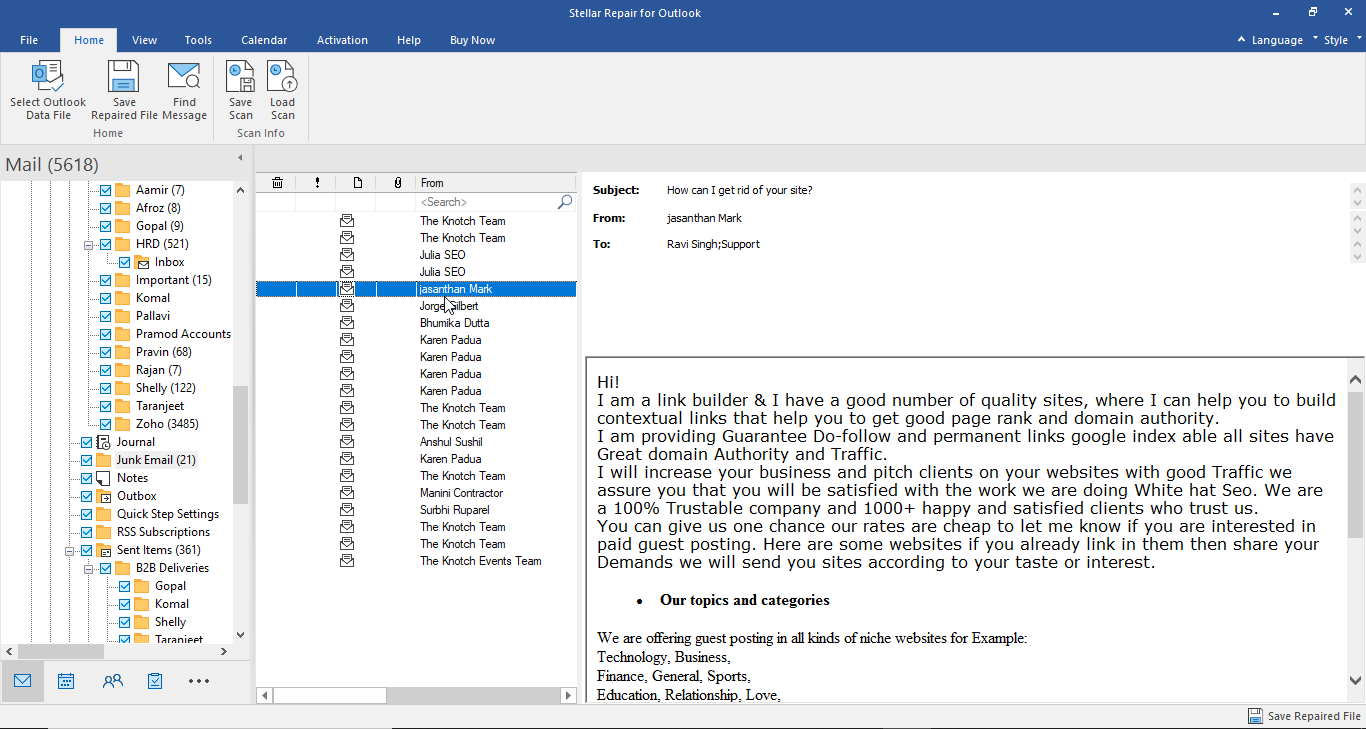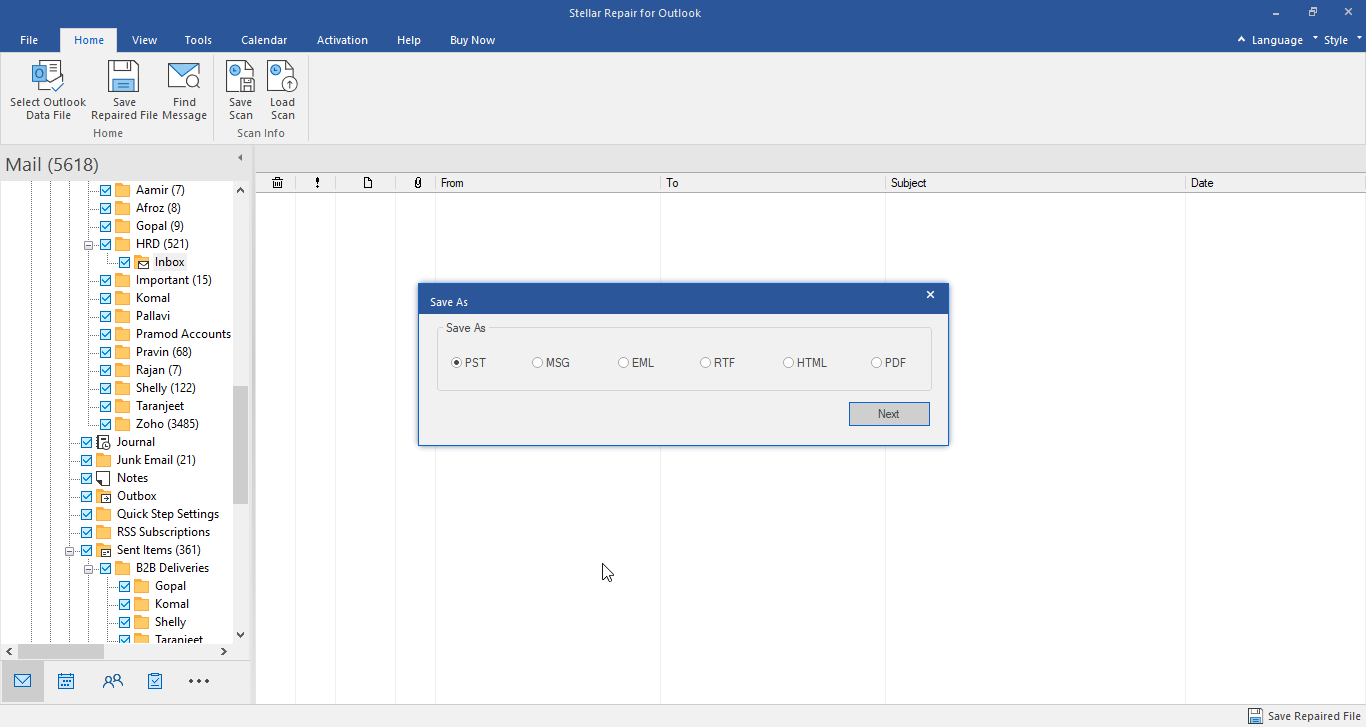Larger PST files cause performance issues in Outlook and are prone to corruption due to inconsistencies that may develop when the file size increases or exceeds the maximum recommended limit.
You need to know the types of PST files created by different Outlook versions and their limitations to understand this.
There are two types of PST files created by Outlook based on the version.
- American National Standard Institute or ANSI
ANSI PST files have the maximum recommended size limit of 2 GB. If the PST file size exceeds this limit, it may lead to corruption and data loss.
- Unique, Universal, and Uniform Character Encoding or UNICODE
While a UNICODE PST file supports up to 1 TB size, keeping the file size under 20 GB limit is recommended to avoid PST corruption and data loss.
ANSI PST files are created by Outlook 97-2002 versions. If you are using Outlook 2003 or later, there’s a high possibility that the PST file you are using with your Outlook account is a UNICODE PST. However, if you had an old PST file that you are accessing from the newer Outlook version, it could be an ANSI file.
However, other than the large size, PST file may also get damaged or corrupt due to factors, such as:
- System crash or abrupt shutdown
- Outlook crash
- Network error
- Virus or malware intrusion
- Faulty add-in
- Storage media issues
When a PST file is damaged or inconsistent, you may notice signs, like slow Outlook speed or load time, delay in sending/receiving emails, slow search results, and frequent Outlook freeze.
If you are experiencing these issues, you need to check your PST file and repair it before it gets severely corrupt or damaged beyond repair.
Solutions to Fix PST Files Larger Than 10 GB
Although Microsoft provides an Inbox Repair Tool, also known as SCANPST.EXE, as a part of Microsoft Office installation, the tool may fail to repair corrupt PST file larger than 2 GB. It may also fail if the PST file is severely damaged.
However, you may still try SCANPST.EXE on your larger than 10 GB PST file to fix it with proper backup.
Below we have mentioned two different methods to fix PST files larger than 10 GB using the SCANPST.EXE and an advanced Inbox Repair Tool.
Method 1: Fix PST Files using SCANPST.EXE
To use SCANPST.EXE for PST repair, follow these steps:
- Press Windows + R, type %programfiles%\Microsoft Office\, and press Enter. If this didn’t work, type %programfiles(x86)%\Microsoft Office\ and click Enter.
- Open Officexx
- Find and launch SCANPST.EXE.
- Click Browse to select the PST file larger than 10 GB.
- Click Start and wait for the scan to finish. This may take a while.
- After the scan, click Repair.
Note: SCANPST.EXE repairs PST files by removing damaged or irrecoverable mail items from the damaged or corrupt PST file. This can lead to data loss. Thus, create a backup before repairing your PST files with SCANPST.EXE.
- The tool may stop responding or freeze while repairing the PST file. This is normal. You must wait for it to start responding and finish the repair.
- Once repaired, you can open the PST file in any Outlook profile.
However, if the tool fails to repair the PST file or crashes, you can use an advanced inbox repair tool discussed below.
Method 2: Repair PST File Using Advanced PST Repair Tool
You can use an advanced PST repair tool, such as Stellar Repair for Outlook. The software is designed to repair severely corrupt PST files, even larger than 50 GB. Thus, it can quickly repair and fix your PST file larger than 10 GB. The software does not alter the original PST file. Instead, it runs in read-only mode while scanning the damaged PST file and provides an option to save the recovered mail items from repaired PST to a new PST file.
Further, you have the option to save the recovered mail items in a single PST or split your 10 GB or larger PST file into smaller multiple UNICODE PST files to avoid corruption risk caused by large size.
The steps are as follows:
- Download, install, and launch Stellar Repair for Outlook.
- Click Choose Location to browse and select the PST file.
- Click Repair.
- After the repair, preview and check all the mail items and select them for saving.
- Click Save Repaired File.
- Choose PST and click Next.
- Click Browse to choose a save location and click OK.
This will save the mail items from the repaired PST file to a new PST file, which you can import into your Outlook account and restore all the mail items.
To Wrap Up
Keeping PST file size under the recommended limit (below 20 GB) is important to avoid inconsistencies, poor Outlook performance, email send/receive errors, and corruption that could result in a data loss situation. However, a PST file may also get damaged due to other reasons. If you have a corrupt PST file larger than 10 GB and can’t fix it using the Microsoft Inbox Repair tool, you can use the advanced Inbox Repair Tool to repair the PST file and recover all mail items to a new PST file.









